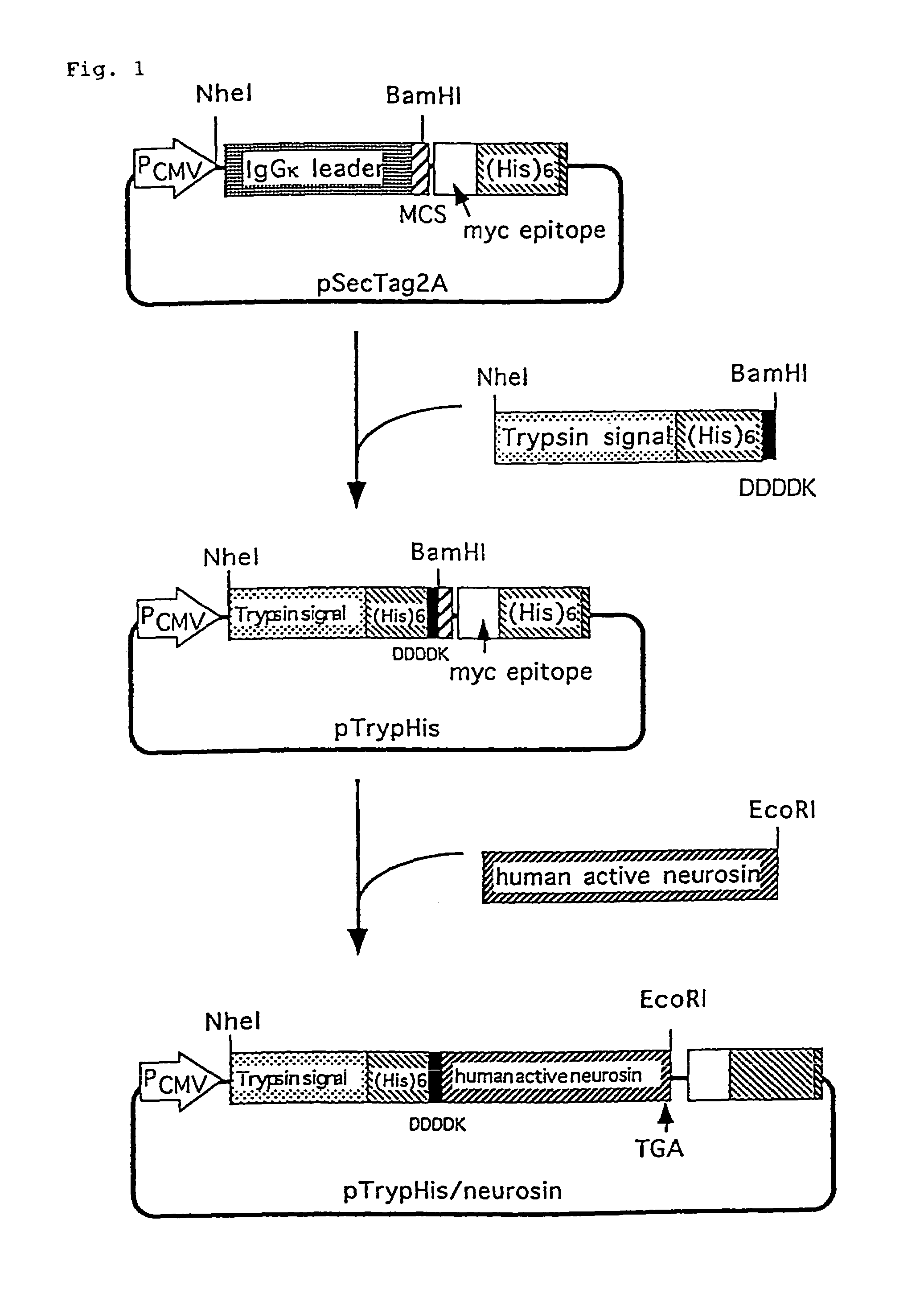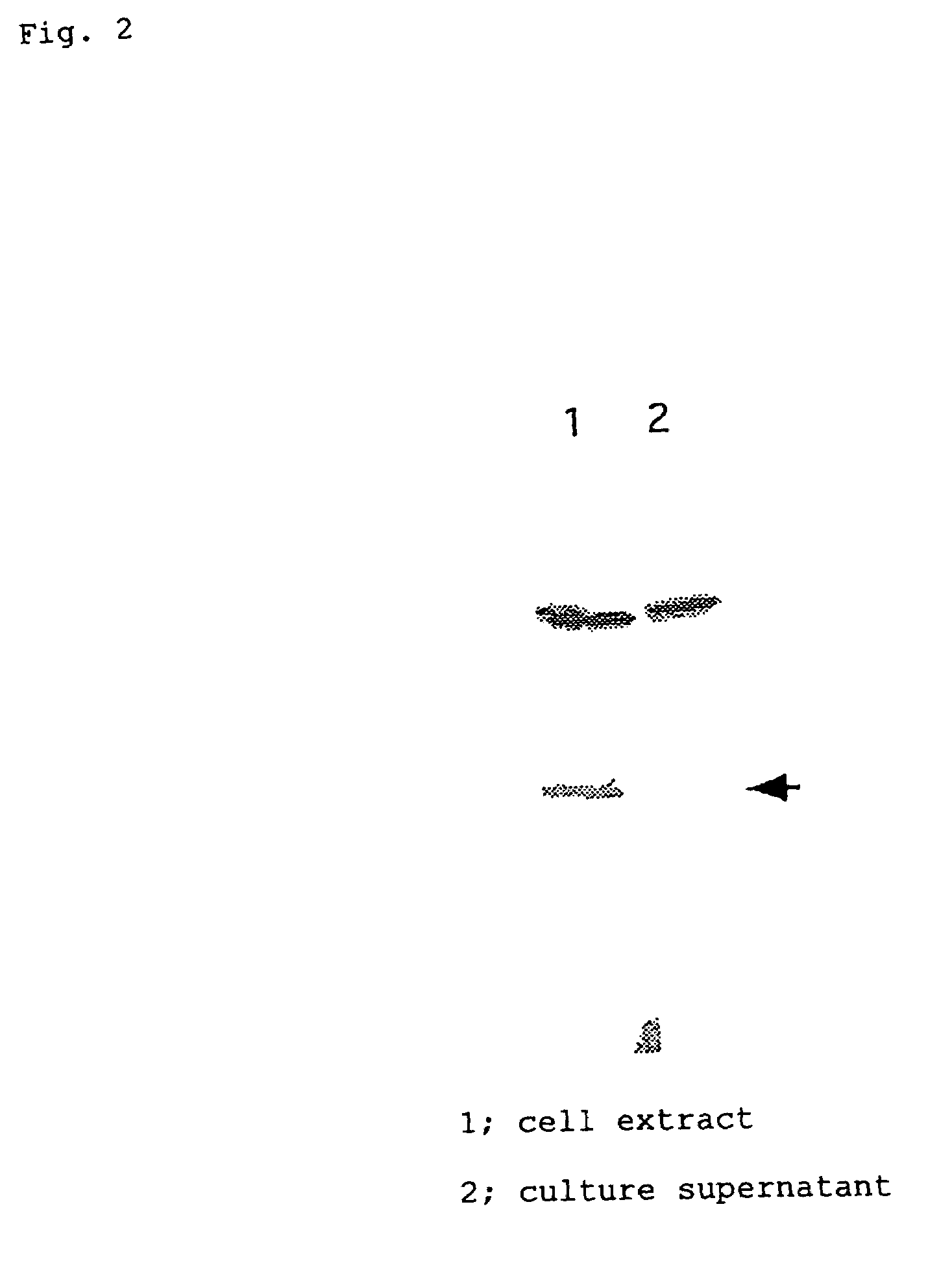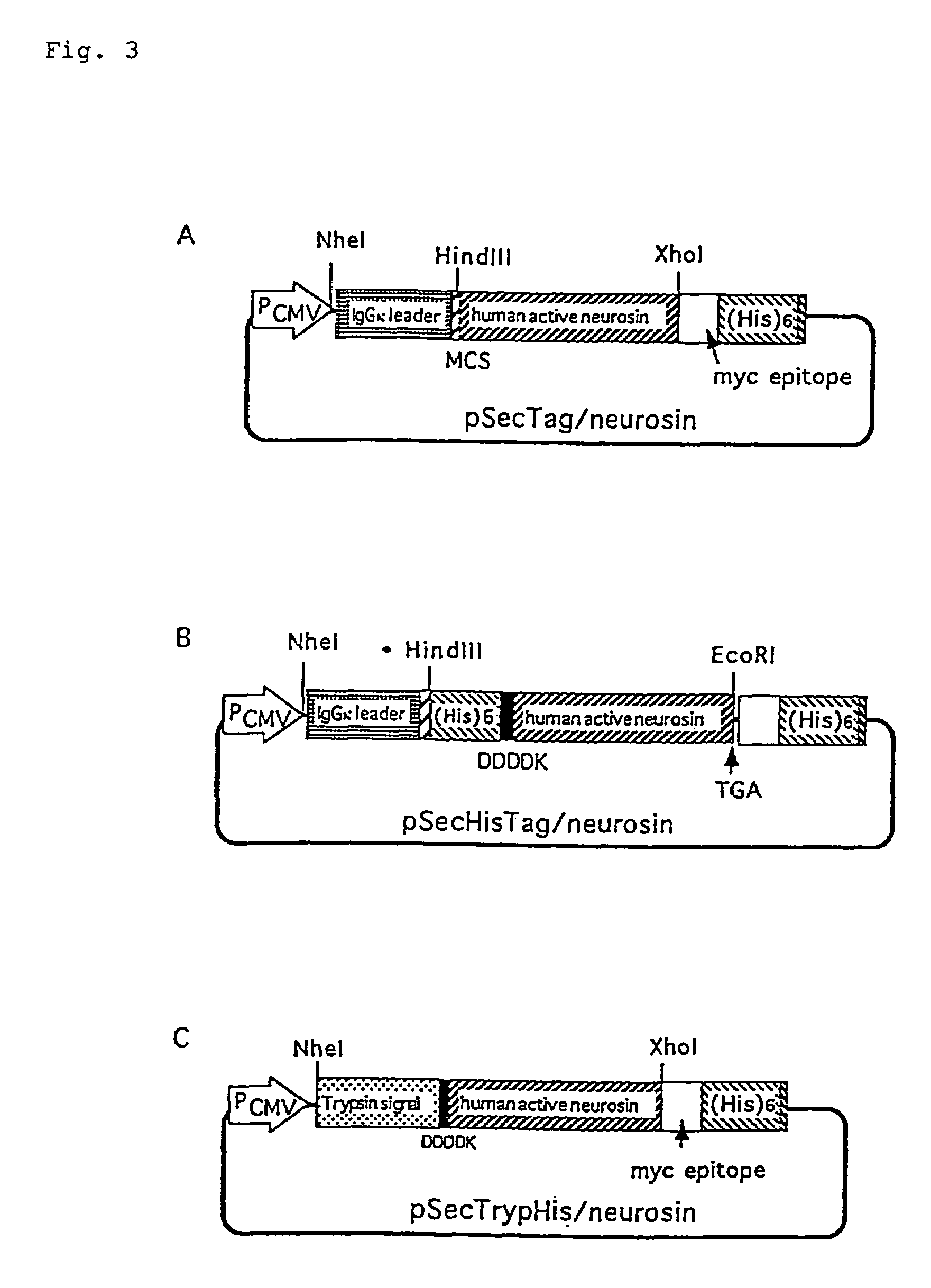Protein expression vector and utilization thereof
a technology of protein expression and expression vector, which is applied in the field of protein expression vector, can solve the problems of difficult to directly isolate and purify the active form of protein, complicated procedures, and unavoidable proteolytic degradation
- Summary
- Abstract
- Description
- Claims
- Application Information
AI Technical Summary
Benefits of technology
Problems solved by technology
Method used
Image
Examples
example 1
Construction and Expression of Plasmid pTrypTag / Neurosin
[0075]A sense DNA containing the nucleotide sequence shown in SEQ ID NO: 1 and an antisense DNA containing the nucleotide sequence shown in SEQ ID N: 2 were synthesized as a secretory signal containing a histidine Tag (His tag) (hereinafter referred to as His secretory signal) to be newly incorporated into the plasmid pSecTag2A (manufactured by Invitrogen Corporation). The sequences of the restriction site in this His secretory signal sequence were Hind III-Nhe I at the 5′ end and BamH I-EcoR I at the 3′ end.
[0076]Plasmid pSecTag2A (1 μg, 0.1 μl) was treated with the restriction enzymes Nhe I and BamH I to completely remove the region encoding IgGk leader sequence. To this solution were added 100 pmoles each of the sense DNA and the antisense DNA described above, and the mixture was treated at 70° C. for 10 minutes, after which it was left standing at room temperature for 30 minutes to allow annealing. To 1 μl each of the His s...
example 2
Studies on Preparation and Expression of pSecTag / Neurosin, pSecHisTag / Neurosin, and pSecTrypHis / Neurosin
[0080](1) Construction of each plasmid
[0081]According to the same manner as in Example 1, cDNA corresponding to the active region of neurosin, which was amplified by SEQ ID NOS: 5 and 6 and using as the template pTrypHis / Neurosin, was inserted between Hind III site and Xho I site of pSecTag2B cloning site to obtain pSecTag / Neurosin (FIG. 3A). cDNA was amplified by using SEQ ID NOS: 7 and 4 and as the template pTrypHis / Neurosin constructed in Example 1, and was inserted between Hind III and EcoR I sites of pSecTag2B to obtain pSecHisTag / Neurosin (FIG. 3B). According to the same manner as in Example 1, SEQ ID NOS: 8 and 9 were annealed, and the fragment obtained by Nhe I and BamH I digestion was inserted into pSecTag2A to obtain pSecTrypHis. Into BamH I site and Xho I site of pSecTrypHis, which had been blunt-ended, was inserted active-form neurosin which had been amplified by SEQ I...
example 3
Preparation of pFBTrypSigTag / Neurosin
[0085]The portion of pSecTrypHis / Neurosin spanning from the trypsin signal to the enterokinase recognition site was amplified by using SEQ ID NOS: 10 and 11 such that the peptide Leu-Val-His-Gly (amino acid 1–4 of SEQ ID NO;15) was located at the C-terminus. The product was inserted between Nhe I and Hind III sites of pSecTag2A to obtain the plasmid pTrypSig. About 200 bp which contained His tag region in pTrypHis was amplified by using SEQ ID NOS: 11 and 7. A fragment of about 40 bp containing His tag and enterokinase recognition site, which was produced by digesting with Hind III and BamH I, was inserted into pTrypSig to obtain pTrypSigTag (FIG. 5A).
[0086]cDNA, prepared by amplification of the portion from the trypsin signal sequence to the enterokinase recognition site of pTrypSigTag by PCR using SEQ ID NOS: 6 and 12, was cleaved out by Bg III and BamH I digestion, and inserted into BamH I site of pFastBac 1 (manufactured by Gibco Company). Th...
PUM
| Property | Measurement | Unit |
|---|---|---|
| temperature | aaaaa | aaaaa |
| temperature | aaaaa | aaaaa |
| fluorescence emission wavelength | aaaaa | aaaaa |
Abstract
Description
Claims
Application Information
 Login to View More
Login to View More - R&D
- Intellectual Property
- Life Sciences
- Materials
- Tech Scout
- Unparalleled Data Quality
- Higher Quality Content
- 60% Fewer Hallucinations
Browse by: Latest US Patents, China's latest patents, Technical Efficacy Thesaurus, Application Domain, Technology Topic, Popular Technical Reports.
© 2025 PatSnap. All rights reserved.Legal|Privacy policy|Modern Slavery Act Transparency Statement|Sitemap|About US| Contact US: help@patsnap.com



